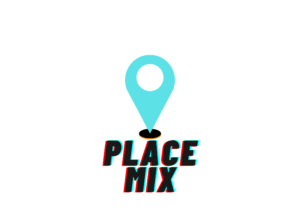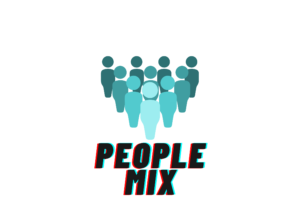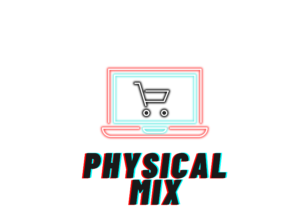The very first concept of marketing taught at the beginning of any business course is the marketing mix. The cycle between creating and delivering a product to the customer is governed by the laws of an ideal advertising mix.
You may think it is one of those bookish concepts with hardly any real-life relevance, but there are a lot of examples of brands who took their advertising mix to a different level, directly contributing to their success.
The marketing mix traditionally, that is, in the 20th century consisted of the 4 Ps viz product, price, place, and promotion. Later in the 21st century, 3 more P’s were added to keep up with the growing markets. They were People, Process, and Physical Environment.
Here are the 7 P’s of the Marketing Mix:
1. Product Mix:
Product or Service as in today’s context satisfies consumers’ needs or wants. Needs are essentially Roti, Kapda Aur Makan, or basic needs. However, a five-star meal, Van Heusen shirt, and penthouse represent want. Companies may focus on need-based services which ensure continuous demand but at a lower price or may offer niche premium services at a premium. Some companies are engaged in supping or providing services that cater to both needs and wants. Under the product, the mix comes with designing the item, branding, labeling, and packaging.
 The product mix has evolved in terms of packaging most significantly as packaged foods including the regular dal and chawal started becoming the order of the day. Producers noticed that eco-friendly packaging was appreciated by society. Items like eggs which were always sold loose started being sold in elegant and safe boxes with attractive branding. Packaging science started gaining a lot of importance from the point of view of safety, perishability (Eg: Tetra Pak), transportation, eco friendly (outrage over plastic, etc), attractiveness, accommodating maximum in minimum space. Everyday examples include Frooti, shampoo sachets, oil pouches, and milk pouches.
The product mix has evolved in terms of packaging most significantly as packaged foods including the regular dal and chawal started becoming the order of the day. Producers noticed that eco-friendly packaging was appreciated by society. Items like eggs which were always sold loose started being sold in elegant and safe boxes with attractive branding. Packaging science started gaining a lot of importance from the point of view of safety, perishability (Eg: Tetra Pak), transportation, eco friendly (outrage over plastic, etc), attractiveness, accommodating maximum in minimum space. Everyday examples include Frooti, shampoo sachets, oil pouches, and milk pouches.
Brand positioning also comes under this.
Maggi noodles was once a privileged class item because of the nature of the food itself and the price tag. But over a period of time as economies of the scale grew, Nestle kept the prices under control in a reverse proportion to the rise in per capita income. Soon Maggi became accessible and a favorite snack across all strata of society.
Maruti Suzuki has products from an Alto for the lower-income bracket to the Ciaz in the premium segment. However, brands like Mercedes and BMW target only a niche segment because they consider their products and brand extremely premium.
2. Price Mix:
The price mix is all the decisions taken by the brand to fix the price of their items. This depends on a number of factors such as cost of production, demand, tax policy, competitor’s price, and distribution channel. For day to day need-based items the pricing model is based on higher volumes and hence competitive and economic pricing strategy is deployed. But for high featured, premium branded items a premium pricing strategy is adopted to ensure the status differentiation. Today most companies work on value-based pricing which is correlated to the ‘paisa vasool’ mindset.
 Vistara airlines are not a budget airline and hence the company never launches low-cost fares. It believes in high-quality service and wants to maintain its premium feel. However, SpiceJet focuses on motivating the masses to travel by announcing low fare tickets which if booked well in advance are as good as train fares. But then such deals come with some conditions like no cancellations or odd timings, etc.
Vistara airlines are not a budget airline and hence the company never launches low-cost fares. It believes in high-quality service and wants to maintain its premium feel. However, SpiceJet focuses on motivating the masses to travel by announcing low fare tickets which if booked well in advance are as good as train fares. But then such deals come with some conditions like no cancellations or odd timings, etc.
3. Place Mix:
Place Mix is concerned with the process of how your items reaches the final consumer. It tries to answer the question, ‘What is your area of play – is the product focused on rural, Semi-urban or urban markets? Is it a particular continent, country, or state-specific? A lot of decisions come under this i.e. deciding a channel of distribution, storage, and warehousing, and inventory management.
 The process of logistics for delivering the item to the market will depend on the location of geography. Retail, wholesale, direct channels get established accordingly. Depending on the perishability of the product it will need to be stored.
The process of logistics for delivering the item to the market will depend on the location of geography. Retail, wholesale, direct channels get established accordingly. Depending on the perishability of the product it will need to be stored.
Unilever, Proctor, and Gamble have been masters in the art of distribution strategy for its FMCG products. The concept of complex supply chains of stockists, distributors, retailers have been designed and implemented on the field by such companies. Market coverage, point of promotion, scheme launches, and effectiveness, shelf space, trade discounts, stocking, and availability are the key facets of the distribution strategy
4. Promotion Mix:
Promotion mix refers to the decisions taken regarding persuading the consumer to buy your item. Four main aspects of this are advertising, personal selling, sales promotion, and public relations.
For mass distribution, mass communication channels are preferred like print ads, tv, and the internet. For niche products – direct selling techniques are suitable as customer relationship building and educating the customer on the item is critical. Advertising methods play a very important role in communicating the features and utility of a product or service and hence effective creatives are worked upon. Today social media plays a very important role in promoting a service as more and more people are utilizing the same.
 Amul used the print ad very religiously and effectively for many decades by having a witty cartoon on current affairs. It also used the TV media to promote its complete range. It focused on its cooperative movement to create an emotional appeal and India centric feel. It launched and promoted anything related to milk.
Amul used the print ad very religiously and effectively for many decades by having a witty cartoon on current affairs. It also used the TV media to promote its complete range. It focused on its cooperative movement to create an emotional appeal and India centric feel. It launched and promoted anything related to milk.
Apple and One Plus use print media such as newspaper front pages, TV advertising, Amazon, and other social media apps to reach out to maximum netizens.
Many companies and brands like ICICI, TVS, L’Oreal, Lux, Kent water purifiers, etc effectively deploy their communication strategies through well-known personalities like actors, sports personalities, etc.
5. People Mix:
People Mix is regarding all the people inside and outside your business who affect you.
Earlier people were segmented primarily based on rich, medium class, and poor. However today the classification is more complex by dissecting further.
 The middle class gets further divided into the lower and upper-middle class. As products or services start becoming more and more precise in terms of applications people are classified based on the profession which is niche segmentation. Age, Gender, and Taste are some primary demographics to consider as you decide your items and communication strategy. The more streamlined it is, in terms of the people involved, the better the results.
The middle class gets further divided into the lower and upper-middle class. As products or services start becoming more and more precise in terms of applications people are classified based on the profession which is niche segmentation. Age, Gender, and Taste are some primary demographics to consider as you decide your items and communication strategy. The more streamlined it is, in terms of the people involved, the better the results.
Another important aspect is the internal management which puts the whole thing together. Your brand should be able to properly select, recruit, hire, and retain the proper people to execute the strategy effectively and deliver the best consumer experience.
6. Process Mix:
Process refers to the flow of activities that take place when there is an interaction between the customers and the businesses. 
Advertisers need to make sure that all these processes are tightly controlled and consistent across all consumers and ensure the best experience. This is where the impression designed by all the P’s come together for the test.
An ideal process should be swift and cost-effective, delivering optimum output.
Digital Strategies for Small Business
Physical evidence refers to everything your customers see when interacting with your brands such as the physical environment where you provide the items or service, the layout, or interior design. Working closely with the process mix, together they make up the customer experience.
 This aspect in particular has had major alterations due to the COVID -19 pandemic. Suddenly physical evidence had to retreat to virtual platforms. The need to have a virtual presence became a means to survive these tough times.
This aspect in particular has had major alterations due to the COVID -19 pandemic. Suddenly physical evidence had to retreat to virtual platforms. The need to have a virtual presence became a means to survive these tough times.
Ascertain industries like pharma, personal healthcare, insurance, mutual funds, OTT platforms, cellular and internet technology, PCs, and laptops, packed foods saw a huge rise in demand they adapted to a digital platform. But the industries which suffered a massive slow down and were dependent on their physical evidence such as automobiles, restaurants, theatres, travel, and hospitality are in deep trouble. The only thing they can do now is work on maintaining their connection with the audience and bring in innovations to gain the consumer’s trust.
As you have probably realized, a good balance between all the P’s of Marketing is what will take your brand from okay to successful.



